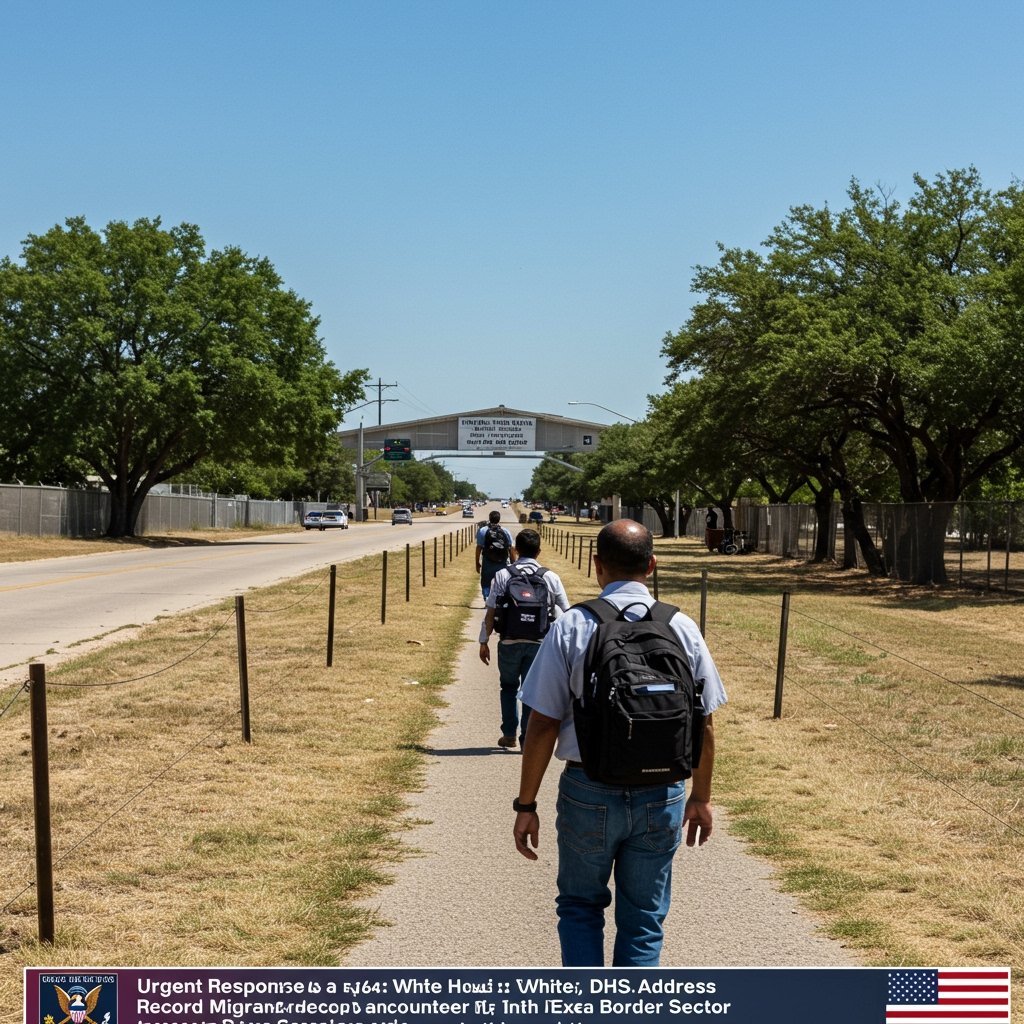White House Convenes Emergency Meetings on Border Surge
Senior officials from the White House and the Department of Homeland Security (DHS) convened emergency meetings late Tuesday, April 29th, following a critical briefing on the escalating situation in the Rio Grande Valley (RGV) sector of the southern border. The high-level discussions were triggered by a detailed report highlighting a significant and rapid increase in migrant encounters, which reportedly exceeded 9,500 individuals within a 48-hour period in that specific sector.
The unprecedented volume presented an immediate operational challenge to Customs and Border Protection (CBP) resources on the ground, prompting the urgent strategy session in Washington, D.C. Officials focused intensively on potential rapid deployment of additional CBP personnel to the affected region. The goal is to bolster the capacity of frontline agents and officers overwhelmed by the sheer number of arrivals.
Exploring Operational and Policy Adjustments
Beyond immediate resource allocation, the meetings delved into exploring options for accelerating the processing of migrants and potentially implementing new enforcement mechanisms designed to manage such large-scale influxes more effectively. The strain on existing processing infrastructure, including temporary holding facilities and administrative personnel, was a central point of concern, necessitating a review of current procedures.
While no immediate, sweeping policy changes were formally announced following the conclusion of Tuesday’s sessions, sources close to the discussions indicated that several potential strategies are actively being considered by the administration. These strategies reflect an effort to address the operational strain with both internal resource adjustments and potential shifts in enforcement posture.
One primary avenue being evaluated involves the temporary shifting of Border Patrol agents from quieter sectors of the border to reinforce the Rio Grande Valley. This measure, while offering immediate relief to the RGV, necessitates careful consideration of potential impacts on other areas and the overall readiness of the border security apparatus.
Additionally, officials are reportedly evaluating legal avenues for potentially accelerating the removal of specific migrant populations. This effort involves navigating complex immigration laws and international agreements to determine if and how certain groups can be processed more quickly or subjected to expedited removal proceedings, consistent with U.S. law and humanitarian principles.
Responding to Operational Strain
The surge of over 9,500 encounters in just 48 hours in a single sector represents a critical operational strain. Such numbers place immense pressure on the physical infrastructure, transportation capabilities, and personnel required to safely and efficiently process individuals, conduct security screenings, and make initial determinations regarding immigration status. The briefing underscored the urgency of finding scalable solutions.
The discussions on accelerating processing aim to reduce the time individuals spend in CBP custody, alleviating overcrowding and allowing agents to return to patrolling duties more quickly. This involves reviewing staffing levels at processing centers, optimizing administrative workflows, and potentially utilizing temporary facilities or resources.
The exploration of new enforcement mechanisms suggests the administration is looking for tools beyond standard processing to manage high-volume events. This could potentially include exploring the applicability of specific legal authorities or inter-agency coordination strategies that are particularly effective in situations of rapid increase.
Anticipating Official Announcement
The emergency nature of the meetings and the depth of the issues discussed signal a focused effort by the administration to formulate a responsive plan. The challenges in the Rio Grande Valley sector are dynamic, requiring flexibility and adaptability in approach.
Sources anticipate that an official announcement detailing the administration’s planned actions and policy responses is expected within the next 24-48 hours. This forthcoming statement is likely to outline specific steps regarding resource deployment, operational adjustments, and potentially clarify any immediate changes in enforcement priorities or processing procedures resulting from the high-level review.
The situation in the RGV sector continues to be closely monitored, and the administration’s response is seen as critical to managing the current operational strain and potentially influencing migration patterns in the region.






